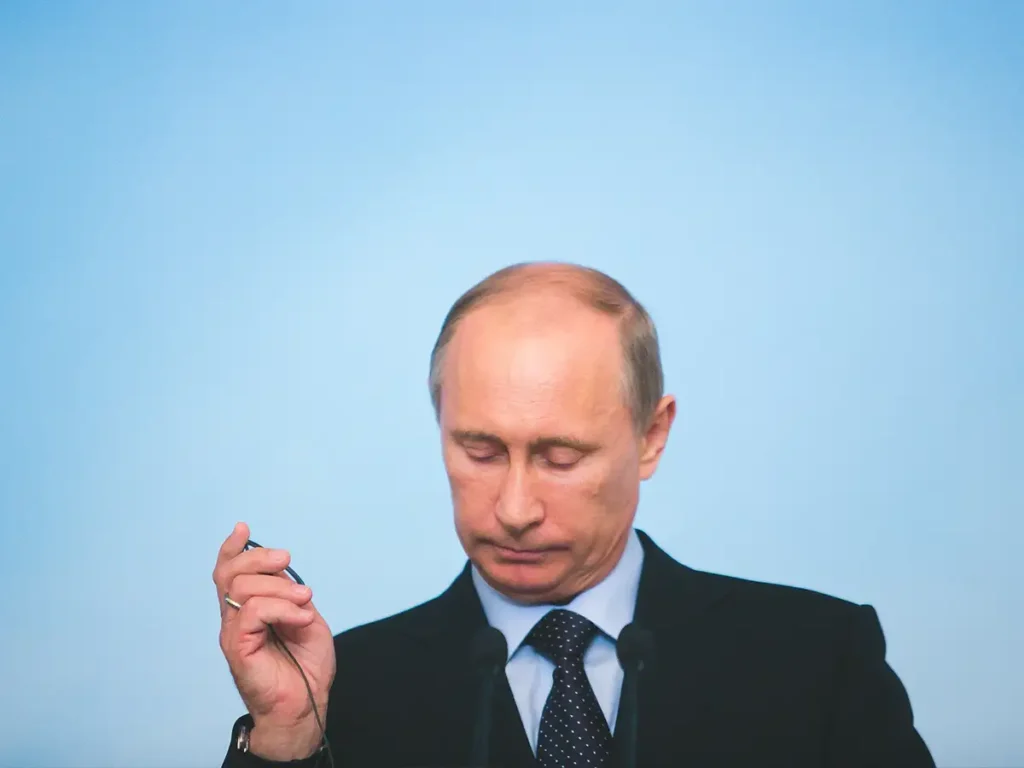Putin’s Nuclear Super-Weapon

Growing apprehension surrounds Russia’s intentions to accumulate a nuclear ‘super weapon’ called the Poseidon torpedo, which possesses the capacity to cause unprecedented catastrophic devastation. Termed a “radioactive tsunami,” this armament harbors the ability to annihilate millions of individuals in a solitary assault. With Russia’s pursuit of amassing a stockpile of 30 Poseidon torpedoes, concerns are mounting regarding the implications of this perilous advancement.
The Poseidon Torpedo: A Menacing Armament
The Bulletin of the Atomic Scientists (BOAS), responsible for the iconic Doomsday Clock, has issued a cautionary statement concerning Russian President Vladimir Putin’s ambition to acquire 30 Poseidon torpedoes. These torpedoes, armed with nuclear warheads, possess the capability to generate a devastating radioactive tsunami, evoking imagery reminiscent of a plot in a James Bond movie.
Diverging from traditional intercontinental ballistic missiles (ICBMs) that can be traced and intercepted, submarines equipped with Poseidon torpedoes are meticulously designed to remain undetectable and elusive. Russia has already modified or constructed numerous submarines capable of carrying these colossal torpedoes. Upon launch, the nuclear reactor propels the torpedo at speeds up to 185 km/h, covering distances of 10,000 km and descending to depths of 1000m. The current detection and interception technology for such a weapon remains largely untested, raising concerns about its potentially devastating impact.
The Reality of the Poseidon Torpedo
While skeptics argue that the Poseidon torpedo is merely a propaganda ploy, experts widely concur that the system is undeniably real and has received substantial resources from the Russian armed forces. Recent reports from the Russian government-run news agency TASS claim that the initial batch of prototype Poseidon torpedoes has already been delivered, with operational models expected to be deployed by 2027. The deployment of these weapons from specially-equipped submarines amplifies the anxiety surrounding Russia’s nuclear aspirations.
Challenges and Controversies
The autonomous nature of the Poseidon torpedo introduces fresh concerns. Operating solely on artificial intelligence, without procedural checks and balances, the weapon’s actions are based on programming, thereby exposing potential vulnerabilities like hacking, technical malfunctions, and inadvertent escalation resulting from environmental accidents. The rapid integration of AI into modern warfare systems entails significant risks when conferring machine intelligence with the power to make life or death decisions, sparking debates on the ethics and safety of fully automated systems.
The Strategic Significance
Experts speculate that the Poseidon torpedo is suspected to have been developed as a response to advancements in the United States’ capacity for defending against ballistic missiles, a concern originating from President Ronald Reagan’s “Star Wars” project. This underwater intercontinental weapon holds the potential to tip the balance toward first-strike capabilities, which could explain Russia’s pursuit of this technology. However, some analysts argue that the primary purpose of the Poseidon torpedo is to function as a psychological weapon for nuclear signaling rather than for actual deployment. The uncertainty and fear it instills could serve as a diplomatic tool in negotiations between Russia and other nations.
Global Nuclear Landscape
The possession of nuclear weapons extends beyond the states recognized under the NPT. Nations like India, Israel, and Pakistan, which never signed the NPT, possess nuclear arsenals. Additionally, Iraq, North Korea, Iran, and Libya have clandestinely pursued nuclear activities in violation of international treaties. While the number of nuclear-armed states has not grown as dramatically as predicted in earlier decades, concerns regarding nuclear proliferation persist, and the emergence of Russia’s Poseidon torpedo introduces a new dimension to the global nuclear landscape.
The accumulation of Russia’s Poseidon torpedo, a nuclear ‘super weapon,’ elicits significant global concerns. The potential consequences of its deployment are far too grave to be taken lightly. It is imperative for the international community to come together and address the proliferation of advanced nuclear weapons, striving towards a safer and more secure world. Only through collaborative efforts can we mitigate the risks associated with such perilous technologies and ensure a future free from the looming specter of devastating nuclear conflicts. The global community must prioritize disarmament efforts, strengthen non-proliferation agreements, and engage in meaningful diplomatic dialogue to prevent the further escalation of nuclear tensions. The urgency to address this issue cannot be overstated, as the stakes for humanity and the planet are incredibly high. By working together, we can strive towards a world where the threat of nuclear annihilation is minimized, and future generations can live in peace and security.
Sources







Have your say